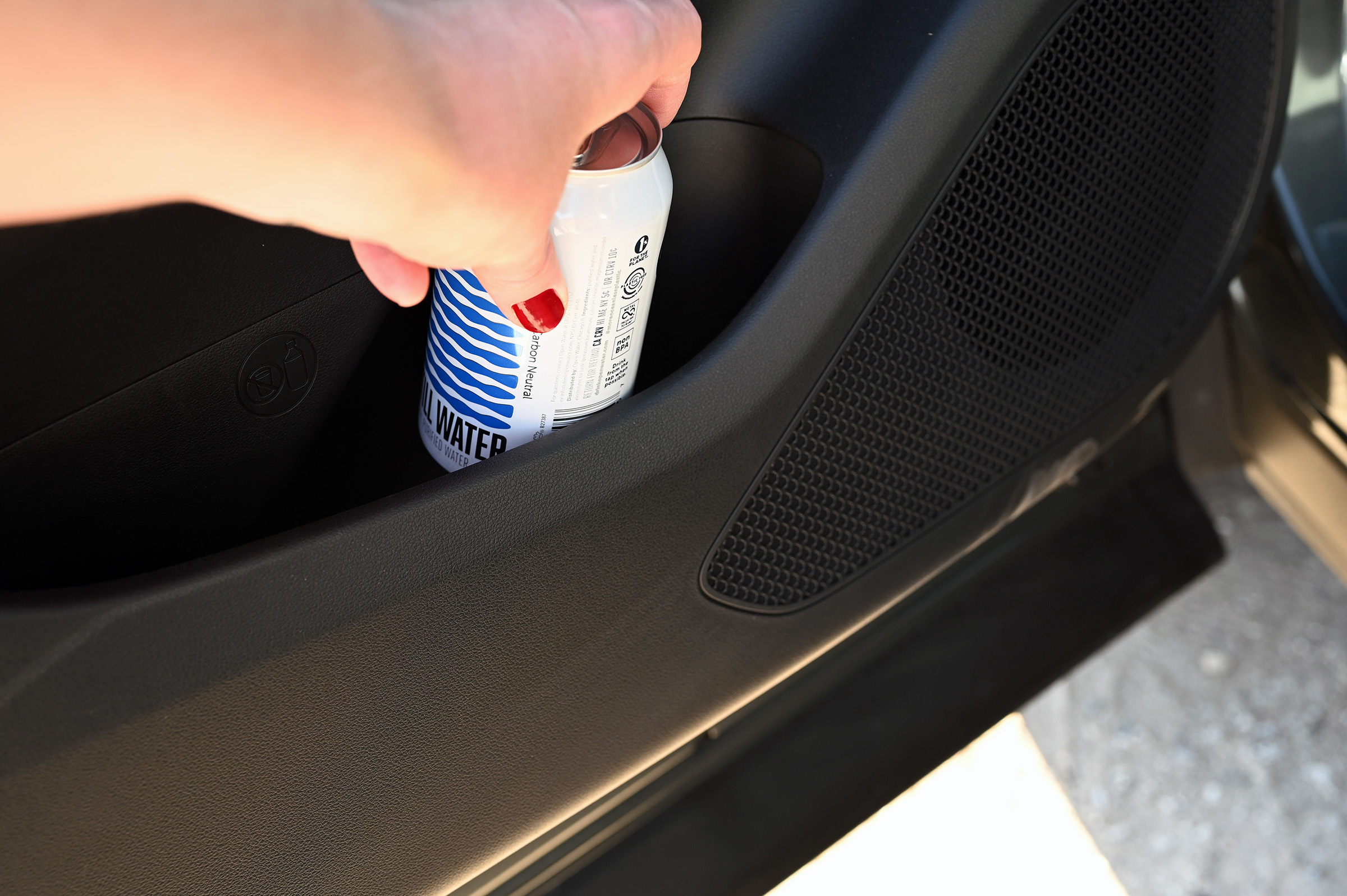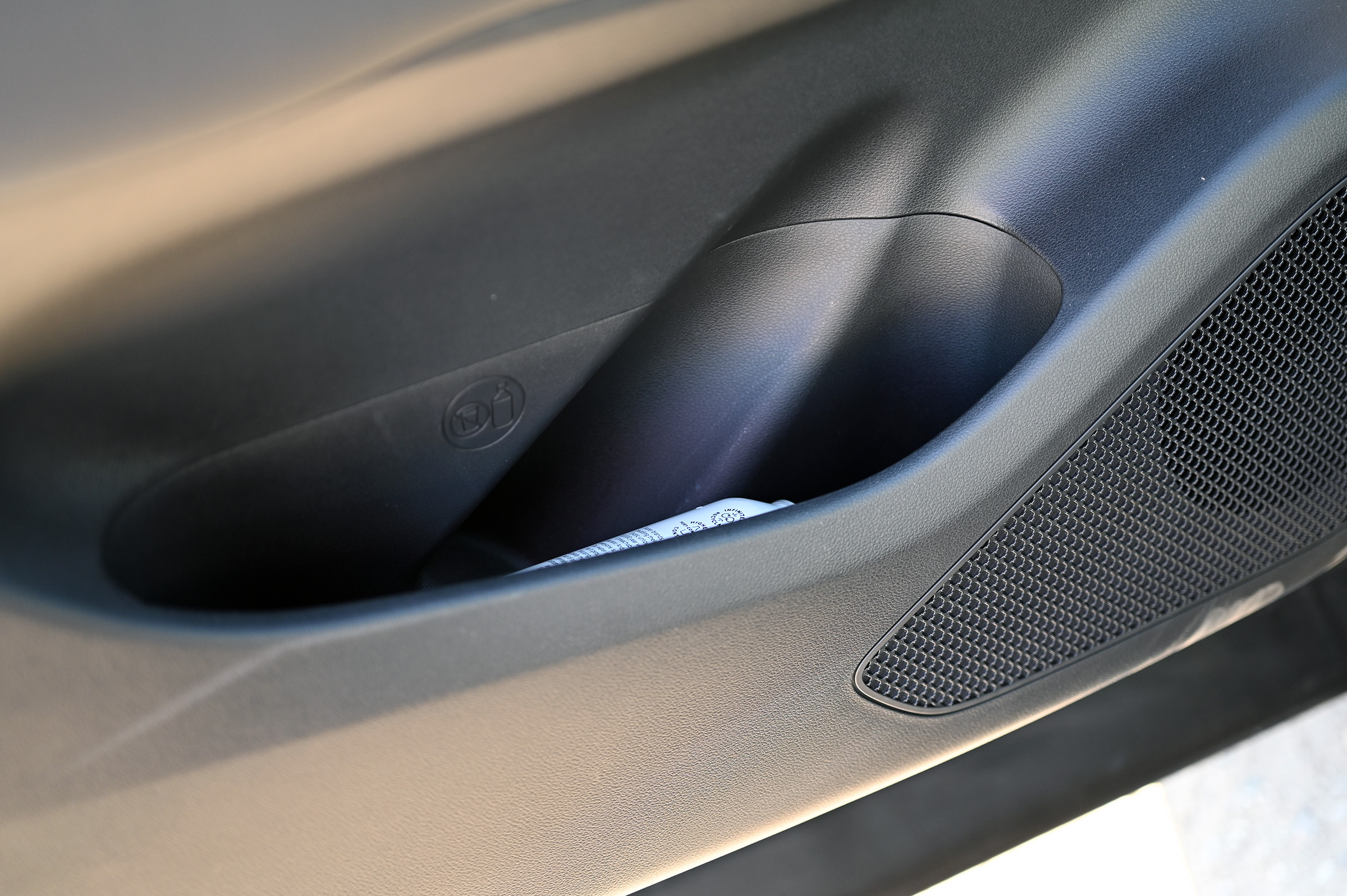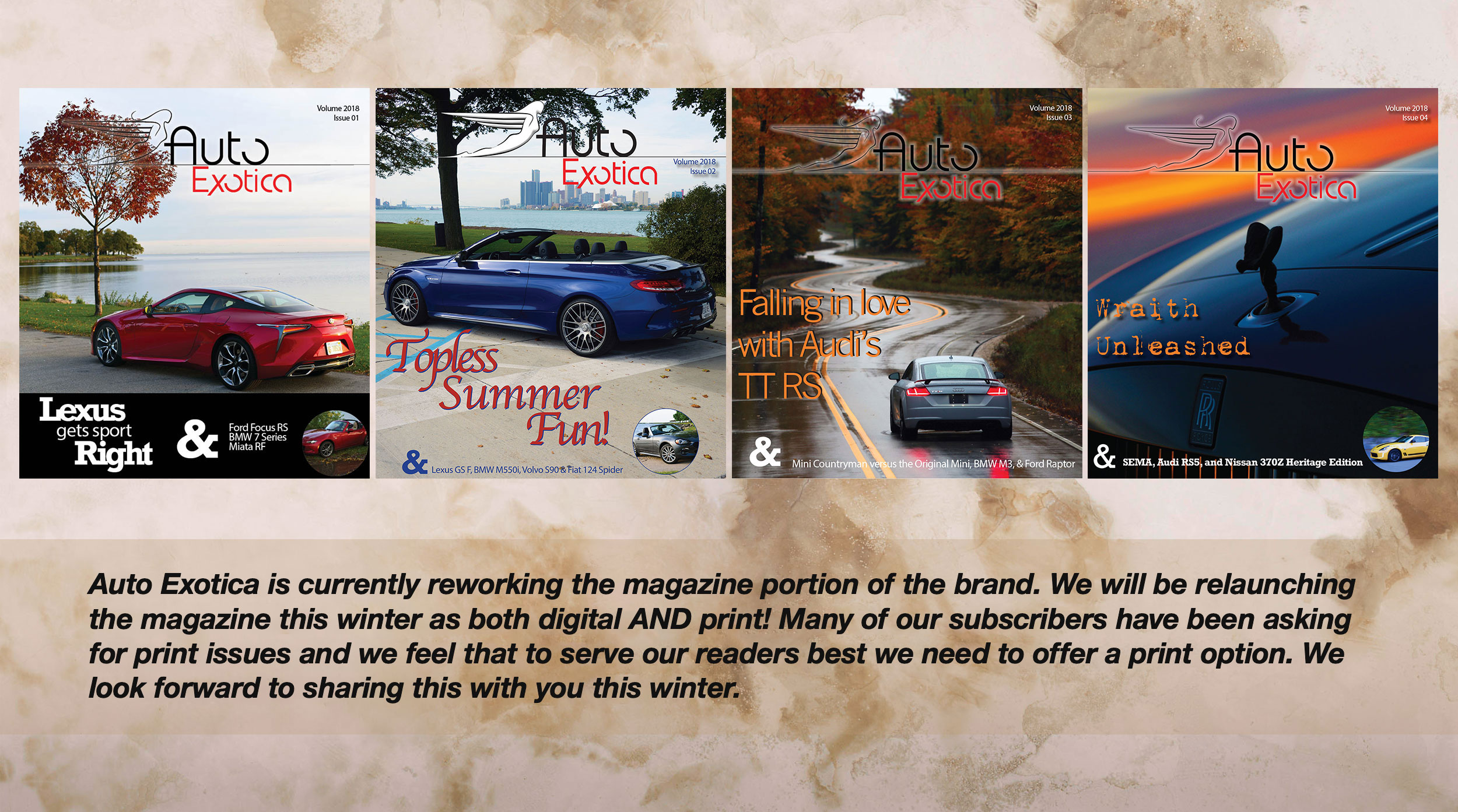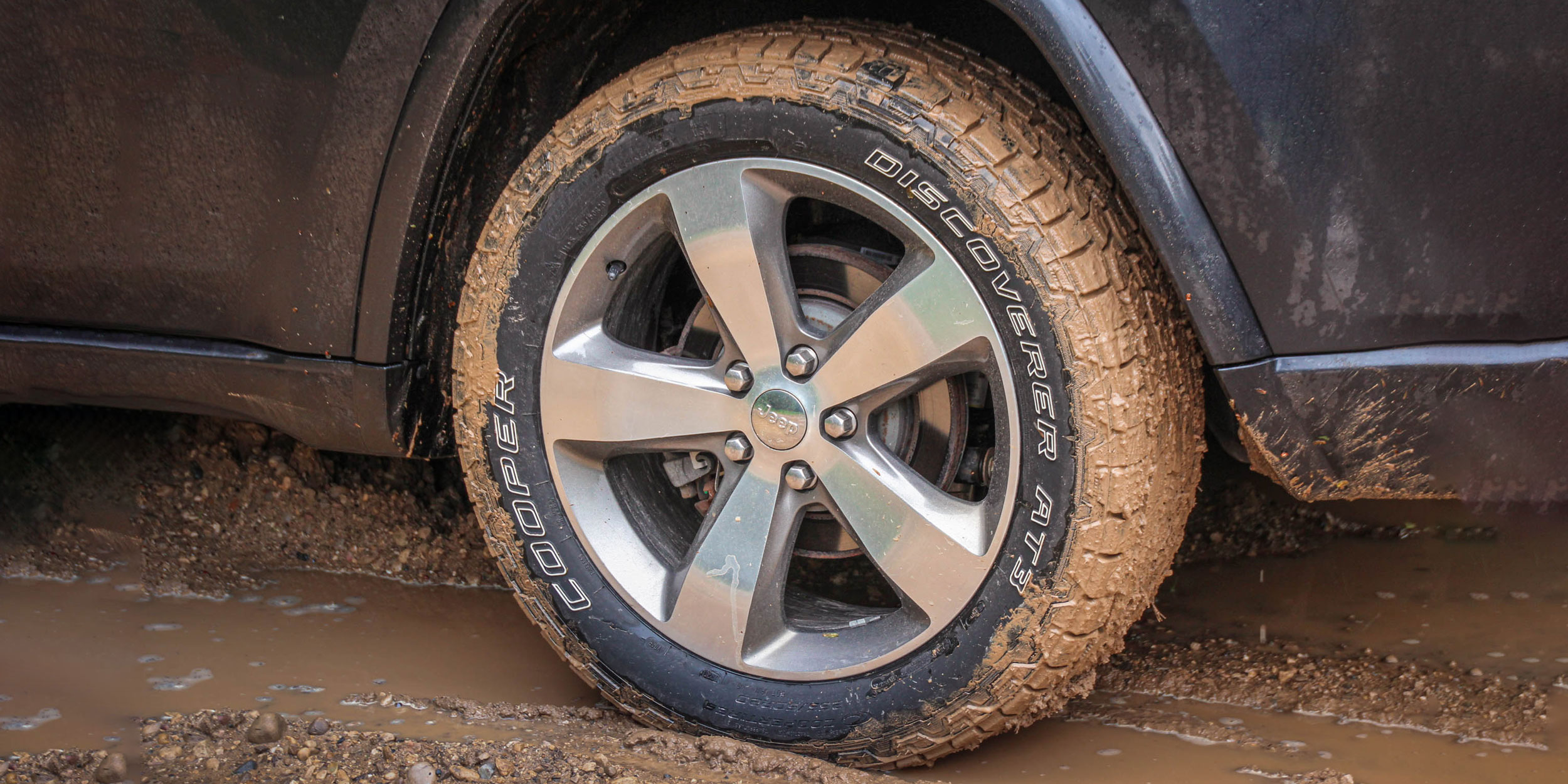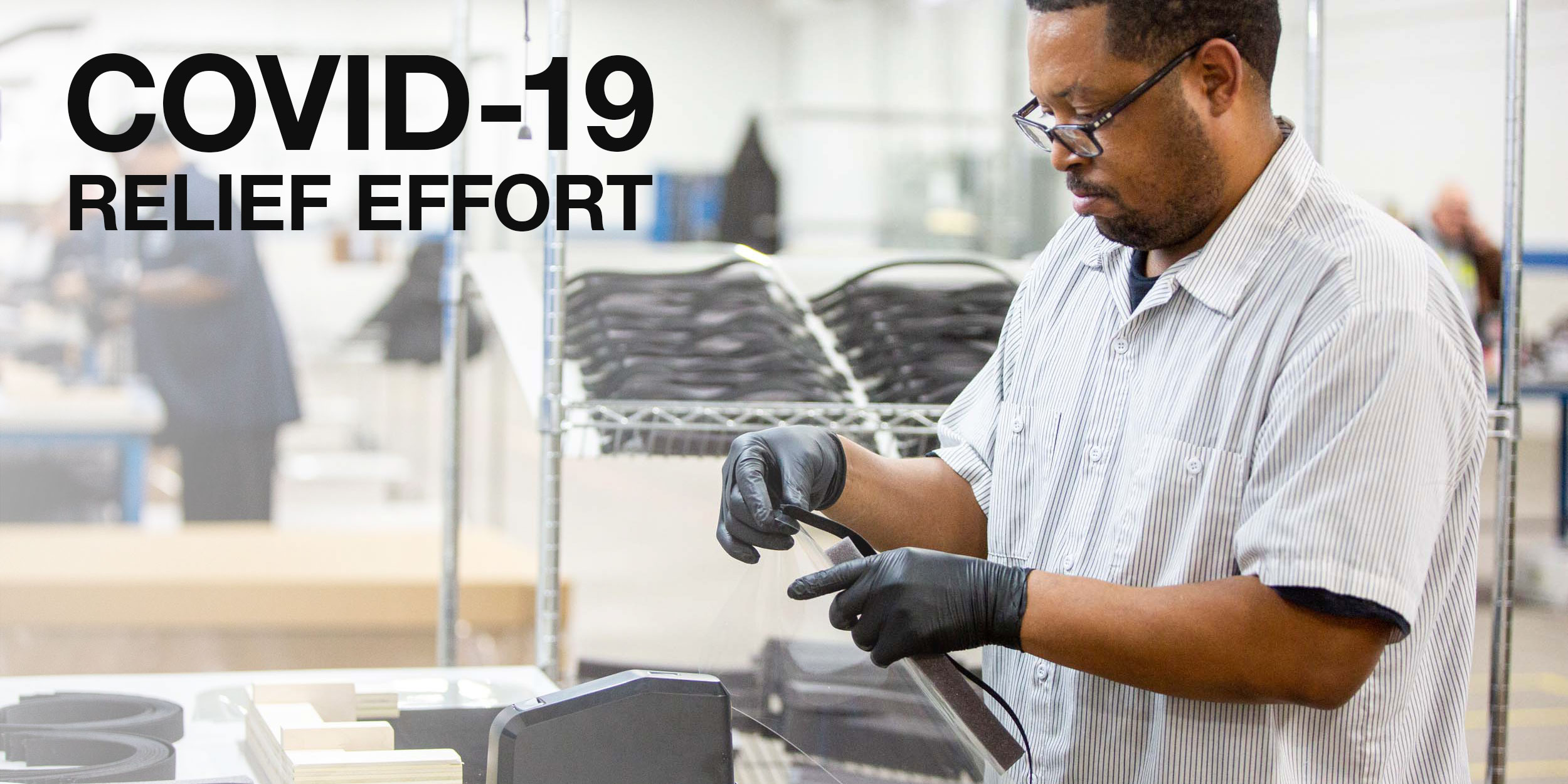2025 Hyundai Tucson: Aiming for the Top

Hyundai’s Tucson has undergone a mid-cycle refresh to keep the model current and competitive. This fourth generation has more standard safety features, a mildly revised exterior and an updated interior that provides a more open and functional cabin. How do all these updates affect the driving experience? Our full review shares those results.
Words & Photos by Jennifer Jensen
A Sales Success
The Hyundai Tucson, now in its fourth generation, is a sales success. Launched in 2004 the compact SUV has steadily gained ground on its major competitors. The fourth generation, which debuted in 2021, sold almost 210,000 units in 2023 placing the Tucson just behind the Chevy Equinox at just under 213,000 units.
By comparison, Toyota sold almost 435,000 RAV4s to be the leader of the compact SUV pack. Honda was second in 2023 with 362,000 CR-Vs put on the road.
Considering that in its first two years on sale the first generation Tucson sold about 68,000 units, Hyundai has really made headway into this challenging market segment.
CONTINUAL IMPROVEMENTS
So how has the Hyundai Tucson gone from the back of the pack to challenging the podium over the past twenty years? They followed a pretty simple formula: listen to the consumer and make incremental improvements.
This mid-cycle refresh of the fourth-generation Tucson is no different. Hyundai’s team reached out to current owners to find out what they liked and didn’t like in their Tucson’s and then addressed any of those concerns with this refresh.
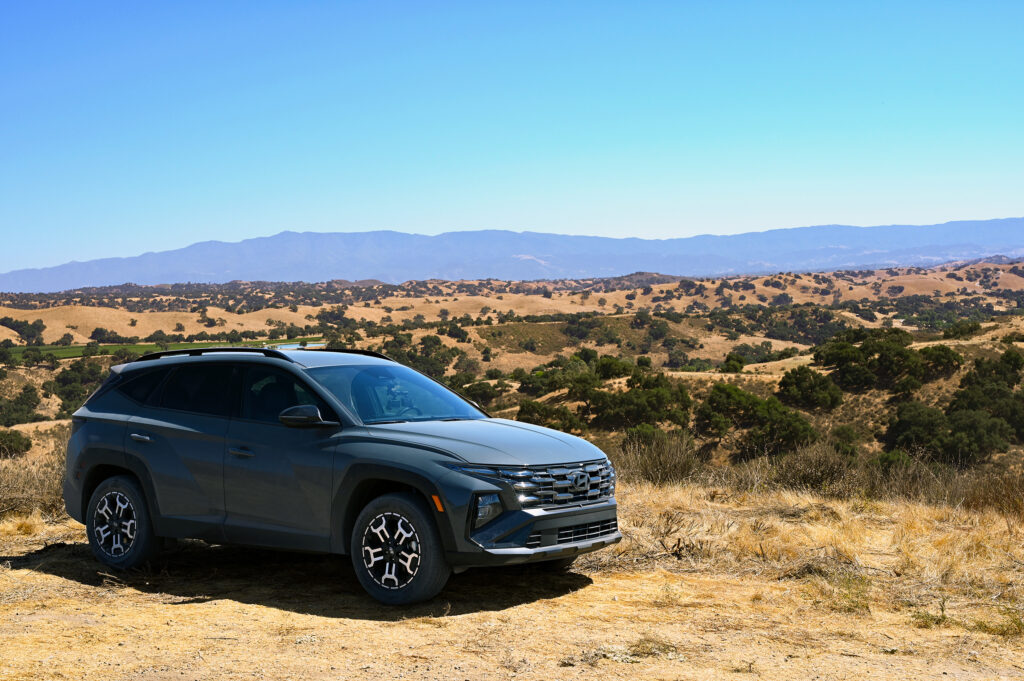
THE NEW STUFF
The good news is that Hyundai’s team received positive feedback on a number of items in the current Tucson. Owners like the bold and edgy exterior design and the “modern” and vast interior.
With that knowledge in hand Hyundai’s designers went to work
Overall the changes to the Tucson are mild with the biggest updates happening in the cabin.
On the outside Hyundai’s designers went for a bolder and more muscular look with a revised front bumper and new grille. The designers also refreshed the Tucson’s very recognizable daytime running lights by simplifying the look bringing the total number of lights down from ten narrow units to eight larger lights.
Some new alloy wheels and anodized aluminium badges round out the exterior updates.

OPEN INTERIOR
The biggest changes are on the inside, though these updates are not groundbreaking updates to the tried and true form of the Tucson.
Gone is the “dual cockpit” design that had a waterfall-like flow to the center console. In its place is a more open cockpit that boldly features a panoramic curved display that is focused towards the driver. Optional in that display is a 12.3-inch instrument screen and standard across all models is a matching 12.3-inch display.
The design team saw fit to move the PRNDL from the center console to a stalk on the steering column. Though this is only on the limited trim for the gas-powered Tucson and also on the hybrid models. Lower trims retain typical old-school style PRNDL remains on the lower trims.
This shift-by-wire stalk is becoming common across Hyundai’s lineup. They added physical buttons (THANK YOU!) for common controls like audio volume and tuning, along with select HVAC controls. However, the “buttons” for the HVAC are actually haptic buttons spread across a smooth surface so you still have to look away from the road to use these. I’m not sure that’s an improvement.
One interior change I really like is the large phone charging pad where the PRNDL used to be…at least on the top trim. People will love that you can just set your phone on the center console to charge it instead of trying to toss it into a hidden charge bay like many other manufacturers are doing.
There are also a number of ways to charge those devices we’re all so attached to if the charging pad is occupied. Located right at the bottom of the center stack are two USB-C outlets with 27-watt charging capability and a 12V outlet.
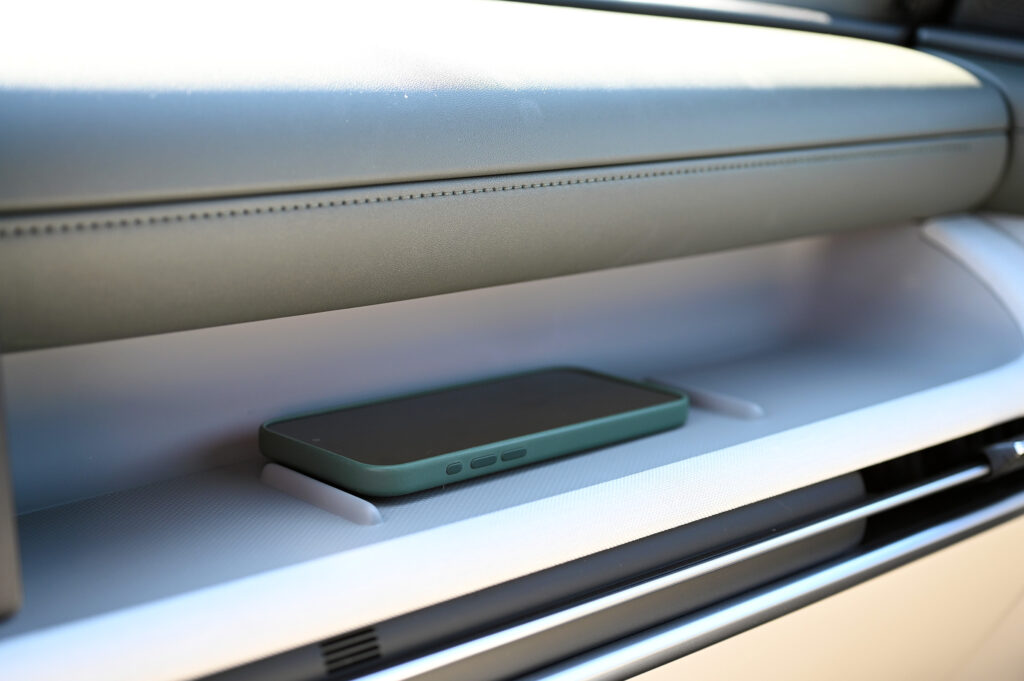
Lastly is the addition of a dashboard tray just above the glovebox for passengers to set things on. So be prepared for lots of food crumbs to be rolling around as you know that will be where French fries or other snacks will end up.
These small changes do add up to a more open feeling interior that is very user friendly and easy to enjoy.
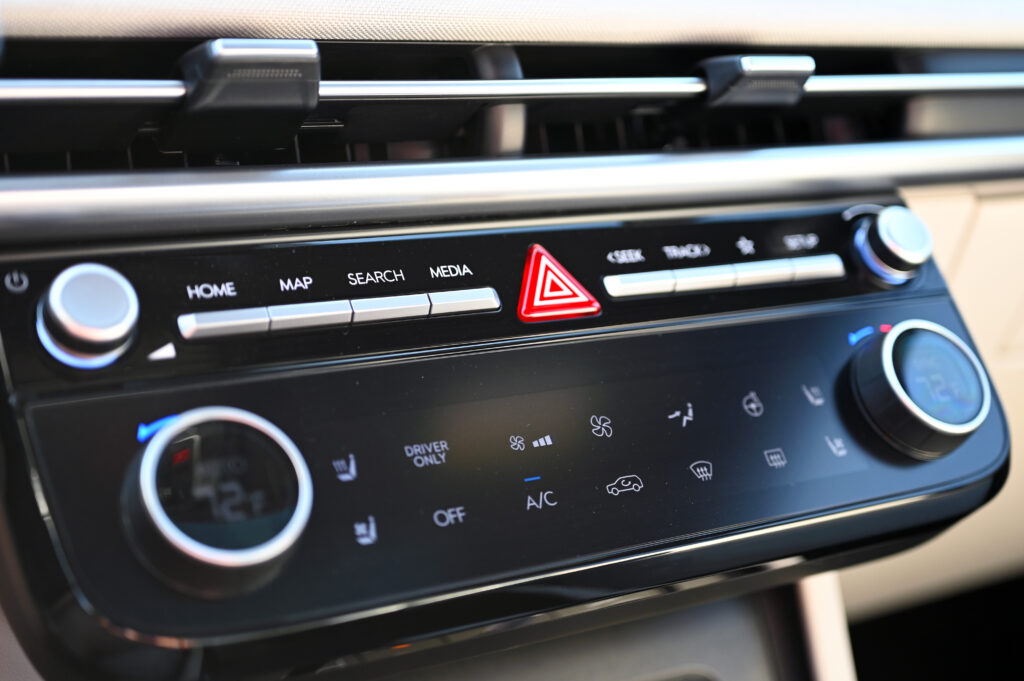
UPDATED TECHNOLOGY
Hyundai saw fit to update some of the on-board tech for the refreshed Tucson.
First and foremost is an all-new multimedia platform. Bluelink+ is standard across all Tucson models which means your Tucson can now receive over-the-air updates on things such as multimedia, mapping systems, remote diagnostics, maintenance reminders, and even safety features at no charge for three years.
Speaking of safety features, the refreshed Tucson has all of them. Literally. Hyundai made their SmartSense safety suite standard across the board. What’s included in the SmartSense safety suite? How about all this:
Forward Collision-Avoidance Assist (FCA) w/ Pedestrian, Cyclist, and Junction Turning Detection, Blind-Spot Collision Warning (BCW), Lane Keeping Assist (LKA), Lane Following Assist (LFA), High Beam Assist (HBA), Driver Attention Warning (DAW), Safe Exit Warning (SEW), Smart Cruise Control with Stop & Go (SCC), Rear Cross-Traffic Collision-Avoidance Assist (RCCA), and Rear Occupant Alert (ROA).
Yes, all of that is standard on every 2025 Tucson.
Optional tech includes a Forward Attention Warning system, Smart Cruise Control 2, and an advanced radar-based Rear Occupant Alert system.
Wireless Android Auto and Apple CarPlay are now standard across the Tucson lineup.
Available options include a 12-inch color head-up display (HUD), Hyundai’s Digital Key 2 which let’s you use your smartphone as your car key, and Hyundai Pay. This program enables you to pay for fuel or parking from inside the Tucson with a payment method linked to your account.
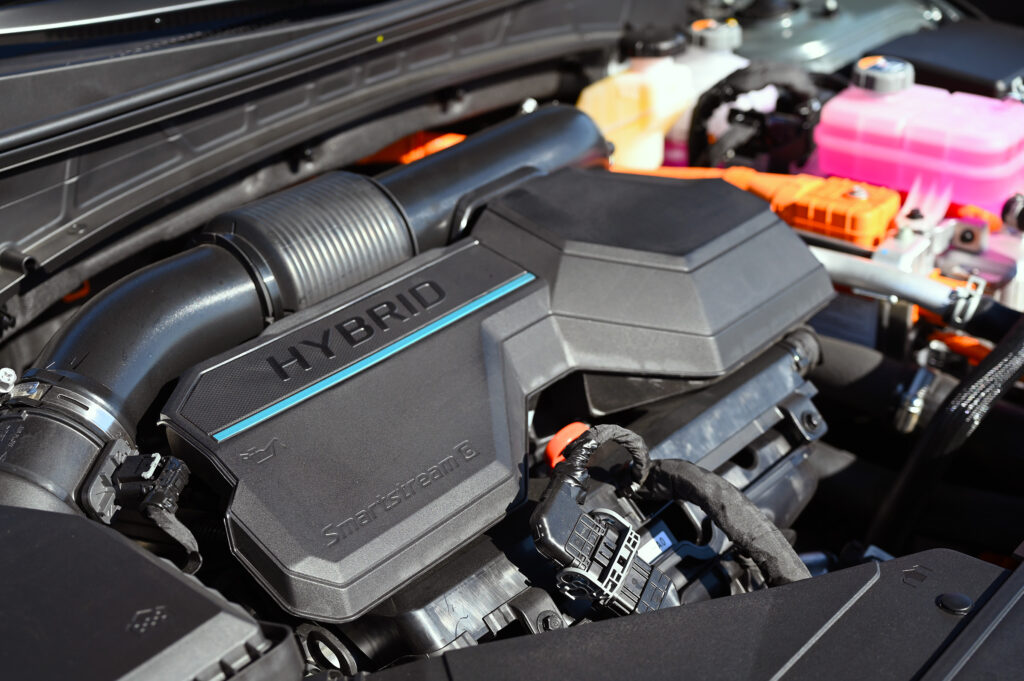
MECHANICALS
Not much has changed under the hood of the 2025 Tucson. Buyers have the choice of an internal combustion engine (ICE), a hybrid or a plug-in hybrid.
The ICE powertrain is Hyundai’s Smartstream 2.5-liter, direct-injected and multi-port-injected four-cylinder gasoline engine that is good for 187 horsepower at 6,100 rpm and 178 pound-feet of torque at 4,000 rpm. The 2.5-liter engine is paired with an eight-speed automatic. Combined mileage for this powertrain is 28 mpg for front-wheel drive models and 26 mpg for all-wheel drive versions.
The hybrid model features a 1.6-liter turbocharged four-cylinder produces 178 horsepower and 195 lb-ft of torque. Add in the 47.7 kW electric motor and a 1.49-kWh lithium-ion battery pack and the combined system output jumps up to 231-horsepower. Of note, that’s a 5-horsepower increase over the 2024 hybrid Tucson’s powertrain.
The plug-in hybrid also has a small bump in total system output over the 2024 model. In this case, the total output of 268 horsepower and 258 lb-ft of torque is an increase of 7hp over the outgoing model. The PHEV system is comprised of the same 1.6-liter turbocharged four-cylinder as the hybrid but it is connected to a 72.0-kW electric motor and a 13.8-kWh lithium-ion battery pack.
Both the hybrid and PHEV models feature a six-speed automatic and combined mileage in the high 30’s. The PHEV has an EV-only range of 32 miles when the battery pack is fully charged. That’s enough for most daily around town activities.
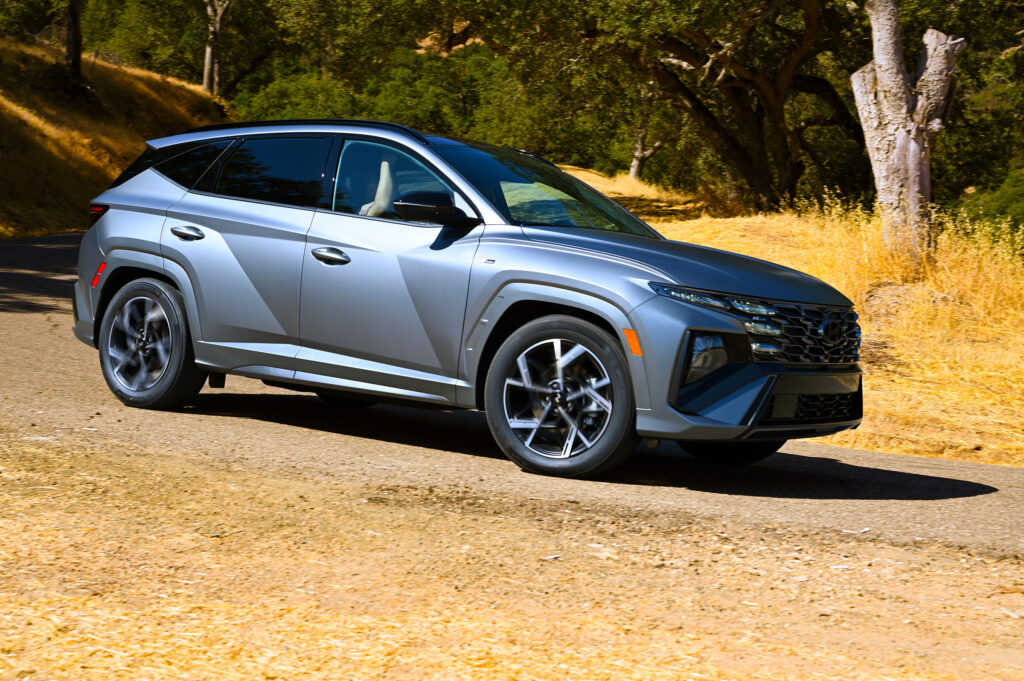
FIRST DRIVE
At this press launch we were only put in the updated hybrid version of the Tucson. So we’re playing with the aforementioned 1.6-liter turbocharged four-cylinder paired with a 47.7 kW electric motor and a 1.49 kWh battery. Total output is 231 horsepower
The first thing I noticed jumping into the updated Tucson is that it does, indeed, feel more spacious. All of the controls fall readily to hand and everything looks and feels on par with, or above, the price point.
With that being said, I don’t really fit in the driver’s seat. I spent a fair amount of time trying to settle in behind the wheel and, while there is plenty of room, I just couldn’t find a driving position where everything felt right. Instead I felt as if I was perched atop the seat and not settled in. My knees were also bumping against the steering column.
There is plenty of room in both the passenger seat and second row for me to fit just fine…even sitting behind myself.
The other issue I had with my sitting position was an impeded view of the new 12.3-inch instrument cluster screen. It’s a nice looking screen but the steering wheel was in my way.
That didn’t matter as much as it might in some other vehicles, because Hyundai saw fit to add a head-up display as standard across the Tucson range. It’s a color display and is easy to read.
Once we started rolling it’s easy to see how the Tucson has become such a sales success. The ride is comfortable, the steering is better than it has any right to be for a compact SUV, and the cabin is just a nice place to be.
There are no real changes to the suspension setup for the refreshed Tucson but there is some technical wizardry going on behind the curtain of the hybrid and PHEV models that might make your drive a little more pleasurable.
e-Motion Drive, according to Hyundai, uses the hybrid system to improve ride and dynamic performance.
e-Handling brakes the electric motor on turn in and puts it back in action on turn out. The system is meant to provide improved agility and stability. Then there is e-Evasive Handling and Assist. This system adds motor torque in both an evasive steering action and then the counter steering action. Finally, e-Ride helps control dive and pitch.
So how well do these system work?
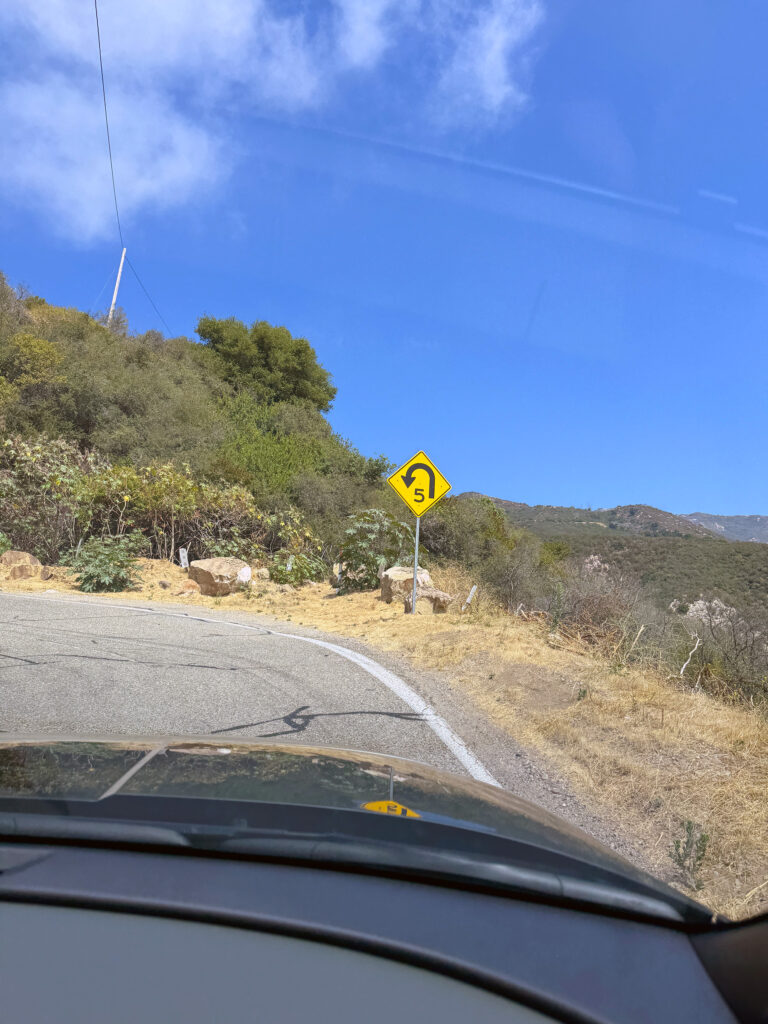
Winding through the mountain roads around Santa Barbara, the Tucson hybrid definitely seemed sure-footed and wound through tight corners and turns with certainty. Yes, there is some body roll, but it’s not excessive. I did wish the seat had a little more bolstering to hold me in place during those aggressive maneuvers, but the Tucson performed admirably.
While the suspension performed those twists and turns well, it was a little unforgiving over potholes and larger breaks in the road. Is it obtrusive? No. But it is noticeable.
Another quite noticeable annoyance during our drive was wind noise. The side mirrors contribute their fair share to that noise, as do the tires, but at highway speeds there is a fair amount of wind noise that you will either address by talking louder to your passengers, or by turning up the volume on the audio system.
The steering was quite good. There is decent feedback from the helm and that communication actually improved by putting the Tucson into sport mode. Sport mode does not change the suspension at all, but it does tighten up the steering and makes changes to the throttle response.
The brakes were another pleasant surprise. The pedal provides ample feedback and very nice modulation…especially with regen braking.
There are paddles behind the steering wheel that, instead of shifting gears, either add or remove the amount of regen the Tucson provides. As a huge one-pedal driving fan in EV’s, I turned it up to the max and the Tucson hybrid almost became a one-pedal driving experience. The regen was never aggressive and it was actually fun to play with the throttle angle while traversing those twists and turns. It almost became a game of how long I could drive without actually touching the brake pedal.
The hybrid powertrain also performed quite well. We had some pretty serious elevation changes and the engine never felt wheezy or underpowered. The battery really helped to push the Tucson along no matter what I did with my right foot.
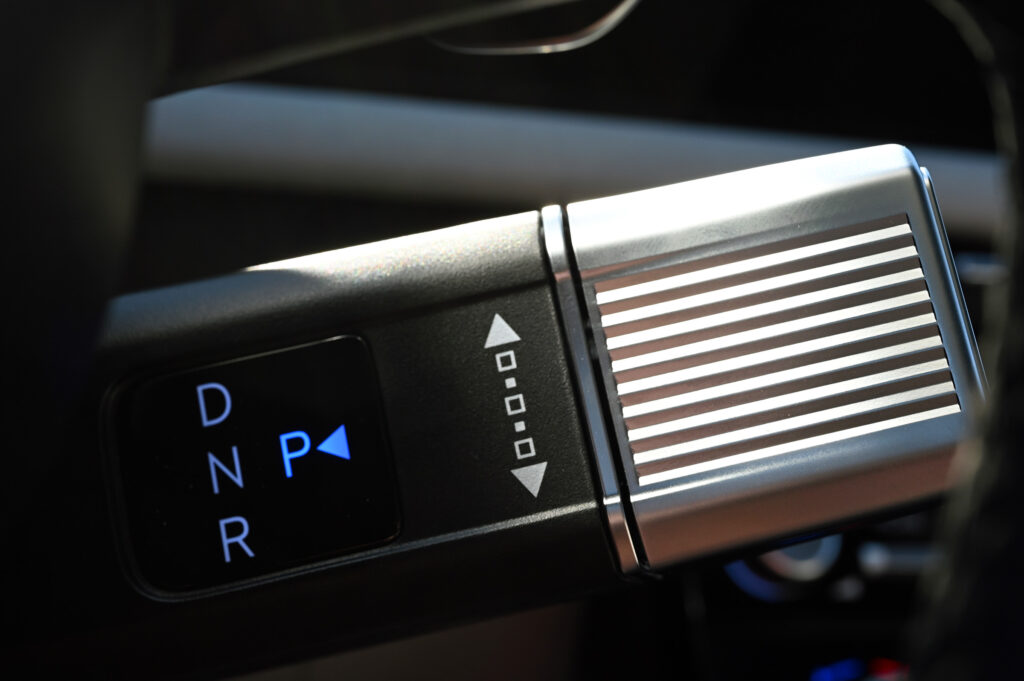
The six-speed automatic wasn’t quite a mind reader, but it was close. The Tucson was never hunting for a specific gear and upshifts and downshifts happened quickly and almost exactly when needed.
Visibility out of the Tucson is quite good and even the b pillar over my left shoulder didn’t really hinder my view of the gorgeous scenery we blasted through.
That Forward Attention Warning became a little annoying during our time on the road. Have an animated conversation with your front seat passenger, or try to take in some of the gorgeous mountain views while driving, and the Tucson will remind you to watch the road, or suggest you take a break.
IN THE END
The Hyundai Tucson is a very capable compact SUV that has a lot to like. The cabin is vast and quite comfortable. There is room to spare in both the front and second row with enough room behind the second row to easily carry anything you would in normal everyday use. In fact, the interior is big enough with the second row folded that Hyundai’s Senior Manager of Product Planning has camped inside the Tucson.
The driving experience won’t leave you overflowing with excitement after a drive, but you will feel safe and sure-footed along the way. Whether your drive is to drop kids off at school, heading to the office, or for a long weekend road trip, the refreshed Tucson will do it in style, and comfort in any road conditions. What more could you ask for?


























